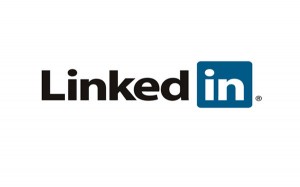“Linsanity” has taken over New York and the NBA! Do you even know what it is?
Let’s begin with some background – Linsanity refers to Jeremy Lin the up-start Point Guard for the New York Knicks which seems to have materialized out of thin air. How up-start? In his first 4 NBA starts, with the Knicks, he has scored more than Allen Iverson, more than Shaquille O’Neal, more than Michael Jordan, tops since the NBA and ABA merged in 1976. Where did he come from? Harvard – was a good player in college, but not a star. Was signed and released by both Golden State and Houston, spent some time in the NBA Developmental league, before signing a 10 day contract with the Knicks (which has turned into a longer term deal).
Jeremy Lin coming onto the scene in the NBA is keen to you knocking down a wall in your house and finding $50 million. It doesn’t happen. Professional sports are professional because they have and find the best – they scout talent 24/7/365 – they do make mistakes – but rarely does potential get missed. So, how did this Asian-American Ivy League educated Point Guard fall through the cracks? No one really has a good explanation. I can assume being on the only Ivy League educated, Asian-American in the NBA didn’t help him get noticed – for the simple fact – that wouldn’t get you noticed in the NBA. He didn’t have Duke, UConn or UNC on his resume, the NBA doesn’t care that he’s smart, and so few Asians (under 7 foot) actually ever get looked at for their basketball talent. He was a plow horse hidden behind a stable full of race horses.
While this type of thing doesn’t happen in the NBA – it does happen in your organizations all-the-time!
The majority of HR Pros just don’t have the background and scouting ability professional sports teams have in tracking potential talent. We give it our best shot, instituting Employee Development Programs, Succession Programs, etc. But our reality is, we still have a very long way to go to be truly effective. So, how can you ensure you don’t have a Jeremy Lin sitting on your bench, that you aren’t utilizing, or worse yet, you allow your competition to have? Look for some of these traits on your staff:
1. Smarts. There is a common saying in athletics, you can’t “coach” size. Meaning no matter how good of coach you are, it is still very hard to overcome a team with superior size and athletic ability. Smarts is the same way in business. You can hustle your way out of a lot of situations in business – but eventually Smarts will get you!
2. Desire. Give me someone with a desire to be the best, and I’ll take them a long way. Too many of our employees have the components to be great, but lack the true desire to be great. Doesn’t matter if your an engineer, accountant, software developer, teacher – little or no desire will kill your talent every time.
3. Love. You’ve got to Love what you do, Love your organization and Love your team. Those people are set up for success, because there is no place else they would rather be, and they’ll fight to keep themselves in that position.
Just because you have one or two of these doesn’t make you great, or even good – you need a lot of all 3. To often HR Pros hang onto people way to long because “they work so hard” but lack core talent (smarts), or “they have more talent than anyone else on team”, but lack the desire to do the job anymore. Stop that! You’ve got too many good people sitting on the bench, waiting for their opportunity, like Jeremy Lin. Open up your mind, really look for the combination of talent, desire and those who want to be with you – and put them into the starting lineup! You won’t be sorry.

